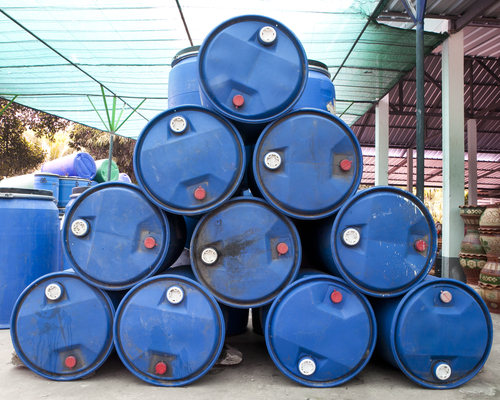 |
Five Things to Remember About Haz Waste Piles
As noted yesterday, hazardous waste piles are considered land disposal units (LDUs) by the Environmental Protection Agency (EPA) and are regulated under the RCRA at 40 CFR 264/265. Specific regulations pertaining to hazardous waste piles are covered in Subpart L and include the following five major aspects to keep in mind.
1) Hazardous waste piles are not the same as containment buildings, even though the EPA recognizes that containment buildings are often referred to as “indoor waste piles.” The primary reason for this is that the EPA does not consider containment buildings to be LDUs and thus, they are designed to include a containment system instead of a liner and leak detection system.
Join us on May 13 for a live webinar on Hazardous Waste Management. Learn how to manage shop towels and wipes, stay in compliance, and potentially reduce costs. Your presenter is a seasoned EPA expert who has been extensively involved with the 2013 rule changes. Register Now.
2) Certain waste piles may be subject to reduced regulatory requirements if they:
- Are located inside or under a structure,
- Do not receive free liquid,
- Are protected from surface water run-on, and
- Are designed and operated to control dispersal of waste and managed to prevent the generation of leachate.
These reduced regulatory requirements, if met by permitted facilities, include exemption from groundwater monitoring requirements and the design and operation requirements for waste piles at 264.250(c).
3) Like surface impoundments, new waste pile units, as well as lateral expansions and replacement units for which construction or reuse began after July 29, 1992, are required to meet minimum technical requirements (MTRs), including a double liner and leachate collection and removal systems (LCRS) as per 40 CFR 264.251(c) and 40 CFR 265.254. In addition, waste piles, unless exempted, require a second LCRS above the top liner. Less stringent requirements apply to interim-status waste piles that are not subject to MTRs. Notably, waste piles are not subject to the emergency repair requirements for surface impoundments.
4) Waste piles are exactly what the name sounds like—noncontainerized piles of solid, nonflowing hazardous wastes. They are not, however, intended to be for anything but temporary treatment or storage of hazardous wastes as defined in 40 CFR 260.10, nor are they to be used for final disposal.
Many facilities use rags for cleaning equipment. The EPA estimates that the 2013 final rule on solvent-contaminated rags affects over 90,000 facilities. Is your facility affected? Attend our webinar on May 13 and find out what you need to know.
Thus, the regulations in Subpart L do not provide for post-closure activities required for waste-in-place closure of an LDU, and when closing a waste pile, all waste residue and contaminated soils and equipment must be removed or decontaminated.
However, in the event that a waste pile is closed by removal and decontamination using all reasonable efforts and contamination is still found to remain on-site, the closure requirements then follow those for landfills under 40 CFR 264/265.258(b) and include post-closure care.
5) Under RCRA, both waste piles and surface impoundments are also subject to waste-specific special requirements as follows:
- 40 CFR 264/265.256 and 40 CFR 264/265.229 require waste piles and surface impoundments that handle ignitable or reactive hazardous wastes to employ continuous protection from conditions that could cause them to ignite or react.
- 40 CFR 264/265.257 and 40 CFR 264/265.230 prohibit the placement of incompatible waste or materials in the same waste pile or impoundment unless certain precautions are taken and these are defined in 264/265 Appendix V.
- 40 CFR 264.259 and 40 CFR 264.231 require permitted waste piles and surface impoundments planning to manage dioxin-containing waste (i.e., F020, F021, F022, F023, F026, and F027) to employ a special management plan approved by the Regional Administrator or authorized state.
